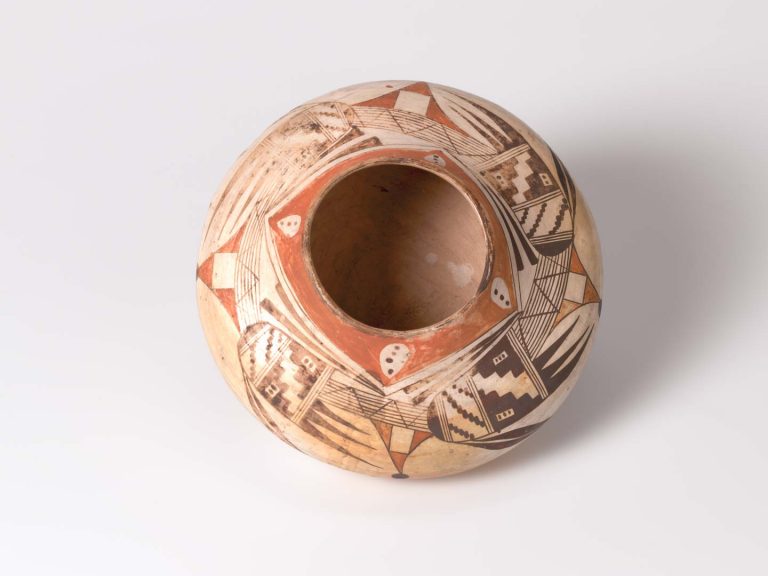We acknowledge the Traditional Owners of the land on which the Queensland Art Gallery | Gallery of Modern Art stands and recognise the creative contribution First Australians make to the art and culture of this country.

Hopi Pueblo / United States / Pot c.1900–50 / Hand-built white earthenware body of squat flaring shape decorated in brown and rusts with an abstract design / 11.5 x 22cm (diam.) / Acquired pre 1977 / Collection: Queensland Art Gallery | Gallery of Modern Art
Hopi PuebloPot c.1900–1950
Not Currently on Display
Pueblo, meaning ‘village’, was the name given to communities in the Rio Grande Valley, an area that straddles the United States–Mexico border, by sixteenth-century Spanish colonialists. (The region includes the southernmost tip of the US state of Texas and a portion of the northern Mexican state of Tamaulipas.) Of the 19 remaining pueblos, many of which are small settlements of less than 2000 inhabitants, several have retained their Spanish name. Each pueblo has its own government, traditions and culture, and they are known for their ancient adobe buildings and missionary churches, as well as the high quality of their handmade textiles, pottery and woodwork.
Each pueblo produces pottery with unique forms, colours and designs. The decorative geometric patterns, semi-abstract plant forms and symbolic animal motifs express harmony between body and earth, while spirals represent renewal and continuation, or a spiritual journey to other worlds. Bird forms, like the ones decorating this pot, have been popular among Hopi potters since ancient times.